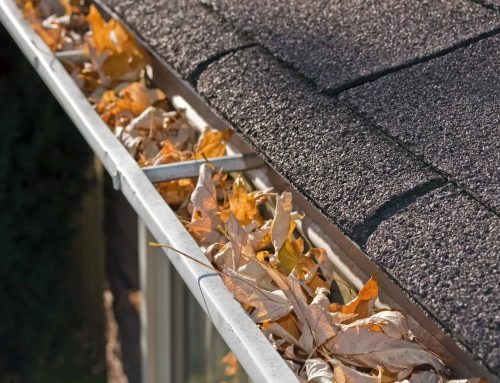Water management around your home’s foundation is one of the most critical aspects of maintaining a structurally sound property. While most homeowners are familiar with traditional eavestroughs and downspouts, there’s another drainage solution that’s gaining attention for its effectiveness in handling heavy rainfall and preventing foundation issues: French gutters. These specialized drainage systems offer unique advantages, particularly in climates that experience significant precipitation and freeze-thaw cycles.
Understanding French Gutters
French gutters, also known as French drains or subsurface drainage systems, represent a fundamentally different approach to water management compared to conventional eavestroughs. While traditional gutters collect water from your roof’s edge and direct it through downspouts, French gutters work at ground level to intercept and redirect water away from your foundation.
What Exactly Are French Gutters?
A French gutter system consists of a trench filled with graded gravel or rock that contains a perforated pipe. This pipe is typically wrapped in landscape fabric to prevent soil and debris from clogging the system. The entire assembly is designed to capture surface water and groundwater, channeling it away from areas where it could cause damage to your home’s foundation.
The system gets its name from Henry French, a 19th-century farmer and judge from Massachusetts who popularized this drainage technique in his 1859 book “Farm Drainage.” The concept, however, dates back much further and has been used in various forms for centuries.
How French Gutters Function
French gutters operate on the principle of gravity and water’s natural tendency to flow toward the path of least resistance. Water enters the system through the gravel surface and flows into the perforated pipe, which then carries it to a designated discharge point away from your home. The gravel acts as a filter, preventing soil particles from entering the pipe while allowing water to flow freely.
The system works continuously, even during dry periods, as it can intercept groundwater that moves through the soil. This makes French gutters particularly effective for addressing persistent moisture problems that traditional surface drainage cannot handle.
Key Differences Between French Gutters and Traditional Eavestroughs
Understanding the distinctions between French gutters and conventional eavestroughs is essential for making informed decisions about your home’s drainage needs. These systems serve different purposes and are often used in combination rather than as alternatives to each other.
Installation Location and Visibility
Traditional eavestroughs are installed along the roofline, making them highly visible architectural elements. They must be properly maintained and cleaned regularly to function effectively. French gutters, conversely, are installed at ground level and are largely invisible once completed, requiring minimal visual maintenance.
Water Source Management
Eavestroughs primarily handle rainwater and snowmelt from your roof, collecting it at the gutterline and directing it through downspouts. French gutters address water at ground level, including surface runoff, groundwater, and water that has already reached the foundation area.
Maintenance Requirements
Traditional gutters require regular cleaning to remove leaves, debris, and ice dams that can cause blockages. French gutters, while requiring less frequent maintenance, may need periodic inspection and cleaning of the intake areas and occasional replacement of the landscape fabric.
Capacity and Flow Management
Eavestroughs must be sized appropriately for your roof area and local rainfall intensity. In Toronto’s climate, where heavy rainfall and rapid snowmelt can overwhelm undersized systems, proper sizing is crucial. French gutters can handle larger volumes of water over extended periods, making them excellent for managing sustained wet conditions.

Benefits of French Gutter Systems for Toronto Homeowners
Toronto’s unique climate presents specific challenges that make French gutters particularly beneficial for local homeowners. The city experiences significant seasonal variations, heavy rainfall events, and freeze-thaw cycles that can create complex drainage issues.
Superior Foundation Protection
French gutters excel at preventing foundation water leaks, a common problem in the GTA due to the region’s clay-heavy soil conditions. These soils expand when wet and contract when dry, creating pressure against foundation walls that can lead to cracks and water infiltration. By intercepting water before it reaches the foundation, French gutters help maintain consistent soil moisture levels.
Effective Management of Toronto’s Weather Patterns
The Greater Toronto Area experiences approximately 831mm of annual precipitation, with significant variations throughout the year. Spring snowmelt combined with rainfall can create challenging drainage conditions that overwhelm traditional systems. French gutters provide continuous drainage capacity that adapts to varying water volumes.
Basement Water Prevention
Basement flooding is a persistent concern for Toronto homeowners, with the city experiencing several significant flooding events in recent years. French gutters installed around the perimeter of your home create an additional barrier against water infiltration, working in conjunction with your existing waterproofing systems.
Soil Stability and Erosion Control
Toronto’s topography includes areas with significant slopes and varying soil conditions. French gutters help prevent soil erosion around your foundation by managing surface water flow and reducing the likelihood of washouts during heavy rainfall events.
Installation Considerations and Local Regulations
Proper installation of French gutters requires careful planning and adherence to local building codes and regulations. In Toronto, several factors must be considered to ensure your system functions effectively and complies with municipal requirements.
Municipal Bylaws and Permits
Before installing a French gutter system, homeowners should consult with the City of Toronto’s building department to determine if permits are required. The city has specific regulations regarding drainage systems and their discharge points, particularly concerning connections to municipal storm sewers.
Soil Conditions and Site Assessment
Toronto’s soil conditions vary significantly across the GTA, from sandy soils in some areas to heavy clay in others. A proper site assessment should include soil percolation tests to determine the appropriate design for your specific location. Clay soils may require additional measures to ensure proper drainage.
Proper Grading and Slope Requirements
French gutters must be installed with appropriate slope to ensure water flows toward the discharge point. The Ontario Building Code requires a minimum slope of 1% (1 inch of fall per 100 inches of length) for drainage systems. In some cases, steeper slopes may be necessary to achieve proper function.
Integration with Existing Systems
French gutters work best when integrated with your existing drainage infrastructure, including eavestroughs, downspouts, and foundation drainage. Professional contractors can design systems that complement your current setup while addressing specific problem areas.
Seasonal Considerations
Toronto’s freeze-thaw cycles require special attention during installation. The system must be designed to handle ice formation and prevent damage from frost heaving. This typically involves installing the system below the frost line and using appropriate materials that can withstand temperature fluctuations.
Integrating French Gutters with Traditional Eavestrough Systems
One of the most effective approaches to comprehensive water management involves combining traditional eavestroughs with French gutter systems. This integrated strategy creates a multi-layered defense against water damage that addresses both roof runoff and ground-level drainage challenges.
How Downspouts Can Connect to French Drains
The integration process involves directing your downspout discharge directly into the French drain system rather than allowing it to pool on the surface or flow across your yard. This connection is typically made through a catch basin or direct pipe connection that channels the roof water into the underground drainage network.
When properly designed, this system prevents the concentrated flow from downspouts from overwhelming a single area of your landscape. Instead of creating erosion or pooling near your foundation, the roof water is immediately captured and distributed through the French drain network for controlled dispersal away from your home.
Benefits of an Integrated System
This combined approach offers several advantages over using either system independently. The French drain provides continuous capacity to handle the concentrated flow from downspouts, even during Toronto’s heaviest rainfall events. During spring snowmelt, when both roof runoff and ground saturation create challenging conditions, the integrated system manages both water sources effectively.
The system also eliminates the need for extended downspout runs across your property, which can be unsightly and create maintenance challenges. Instead of surface extensions that can be damaged by foot traffic or lawn equipment, the water disappears underground immediately at the downspout location.
Design Considerations for Toronto Properties
In the GTA’s climate, the connection point between downspouts and French drains requires special attention to prevent ice formation and blockages. Professional installation includes proper sizing of the connection to handle peak flow rates and incorporation of cleanout access for maintenance purposes.
The French drain system must be sized appropriately to handle both the roof water and any groundwater it encounters. This typically requires larger pipe diameters and more extensive gravel beds compared to French drains that only handle ground-level water.
Making the Right Choice for Your Toronto Home
Determining whether French gutters are right for your property requires careful consideration of your specific situation, local conditions, and long-term goals. Several factors should influence your decision-making process.
Assessing Your Current Drainage Challenges
Common signs that indicate you might benefit from French gutters include persistent foundation moisture, basement water issues, standing water in your yard, or erosion around your home’s perimeter. These problems often persist despite having properly functioning eavestroughs, indicating the need for additional drainage solutions.
Cost-Benefit Analysis
While French gutters require a significant initial investment, they can prevent costly foundation repairs and basement flooding damage. In Toronto’s real estate market, effective drainage systems also add value to your property and provide peace of mind for potential buyers.
Professional Installation vs. DIY
French gutter installation requires specialized knowledge of local soil conditions, proper grading techniques, and municipal regulations. While some homeowners may consider DIY installation, the complexity and potential consequences of improper installation make professional installation the recommended approach.
Long-term Maintenance Planning
Consider your ability to maintain the system over time. French gutters require less frequent maintenance than traditional gutters but may need periodic inspection and cleaning. Factor these ongoing requirements into your decision-making process.
Protecting Your Investment with Expert Installation
French gutters represent a sophisticated solution to complex drainage challenges, particularly for Toronto homeowners dealing with foundation water issues and the region’s demanding climate conditions. These systems offer superior protection against water damage while providing long-term value and peace of mind.
The key to successful French gutter installation lies in proper design, quality materials, and expert installation that considers local conditions and regulations. With Toronto’s unique combination of clay soils, significant precipitation, and freeze-thaw cycles, choosing an experienced contractor familiar with GTA conditions is essential.
If you’re experiencing foundation water issues, basement moisture problems, or persistent drainage challenges around your Toronto-area home, French gutters might be the solution you need. Ontario Downspout Service brings decades of experience in drainage solutions throughout the Greater Toronto Area, with the expertise to assess your specific situation and design a system that protects your home for years to come.
Ready to explore how French gutters can solve your drainage challenges? Contact Ontario Downspout Service for a comprehensive assessment of your property’s drainage needs and discover why we’ve been recognized as a 10-time “Best of Homestars” contractor with thousands of successful drainage projects completed across the GTA.








